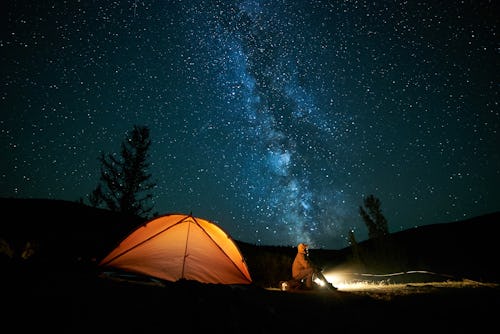
You can forget pretty much any bit of gear on a short, backcountry adventure, and still muddle through, but unless you plan on hammocking, your tent is vital. Exposure is one of nature’s biggest dangers. In the wrong conditions, a lack of adequate shelter can mean the end in just a few hours, whereas you can survive days with no water, and even weeks with no food. This isn’t intended to be morbid, it’s to stress just how important it is to choose the right tent.
Which seasonality should I go for?
When I go trekking, I adapt my clothing to match the environment. In hot weather, I'll take shorts, thin, moisture-wicking clothing, and perhaps one warm layer. In cold conditions, base layers, mid-layers, and insulated jackets will all come into play. Most of us don’t have the means (or inclination) to purchase a different tent for every environment, and besides, this would be wasteful, so think about the sort of adventures that you’re going to be going on most frequently.
A three-season tent is the type that you want for the majority of adventures
One-season tents offer little to no rain or wind protection, so unless you’re on an extremely tight budget, I wouldn’t recommend them. Two-season tents might be sufficient for festival camping (but having seen my fair share of festivals that have descended into mud baths, I’d be wary of a two-season tent even for this level of camping). ; it’s capable of withstanding rain, strong winds, and a good range of temperatures. If your style is winter mountaineering, opt for a four-season tent, which will offer better protection from the elements in snowy conditions and extreme temperatures.
Which shape of tent is best?
The most common tent shapes are dome, A-frame, tunnel, hanging, and pop up.
Pop up tents
have become very popular recently due to their ease of use: simply throw them to the ground and they spring into shape. They’re not particularly sturdy or durable and aren’t usually very compact. They’re fine for festival camping, but I wouldn’t recommend them for a foray in the wild.
Hanging tents
, like sophisticated hammocks, are great for wooded areas with uneven ground. Bear in mind that unless you purchase a hanging tent that can also be pegged to the ground, your camping trip will come to an abrupt end if you're above the treeline.
A-frame tents
are the triangular ones with poles in the middle, that looks rather like a clip art picture of a tent. They used to be the most common kind, but nowadays you’re more likely to see dome tents (which, unsurprisingly, are dome-shaped) with crisscrossing poles. They offer better stability and are more spacious, generally with room to sit up.
tunnel tents
The final kind are , low to the ground and almost halfway between a bivvy bag and a dome tent. The advantage of a tunnel tent is that their height makes them less susceptible to strong winds, and they’re often lighter and more compact, but they’re significantly less roomy and can feel a little like a coffin. They're often cheaper, too.
How much should my tent weigh?
Lightweight tents have come on leaps and bounds, and there are now many one-person options that weigh under 1kg. Ultralight aficionados now often choose to take tents that use hiking poles rather than tent poles to erect, which significantly reduces the weight for a fastpacking adventure (although they tend to be flimsier in high winds). Unless already integrated in the body of the tent, I recommend taking a footprint (groundsheet), to avoid snagging the tent floor on rough ground. Personally, I wouldn’t take a tent that weighed more than four pounds on a hiking adventure, and I prefer lighter, although people that are significantly taller and heavier than me might be fine with a heavier option.
I’ve camped in cheap, shoddy tents and woken up in a pool of water (unpleasant, let me tell you). I’ve also sat out blizzards and 60 miles-an-hour winds in good quality tents, while other tents around me were reduced to limp scraps of material. I’ve made mistakes and learned from them, but most tents are a significant investment and you don’t want to trial-and-error until you get the right one. Here’s what I recommend.
Input may receive a portion of sales if you purchase a product through a link in this article. We only include products that have been independently selected by Input's editorial team.

The MSR Hubba NX Solo Backpacking Tent is a great all-rounder, made from ripstop nylon with plenty of ventilation. At 2.8 pounds, it’s lightweight and portable, and designed for three-season use. It’s large too (the dome shape allows for plenty of headroom) and there’s a porch area generous enough for hiking boots or a small backpack. Purchase the footprint separately.
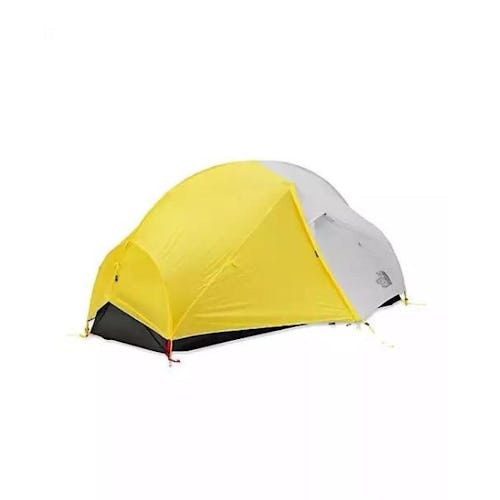
The poles on The North Face Triarch 1 are fantastic; they're very pliable which makes them bend easily with the wind in harsh conditions rather than snapping. The mesh inner is a tinted gray color, which gives a little more privacy than regular mesh, and this is a really spacious one-person option, with plenty of room to sit up, and to stow a pack. The mesh does come down quite low, however, which means that you feel a draught in high winds. With the footprint (included with the tent) it weighs 2.4 pounds.

Hanging tents are so photographable, but they’re also very functional too. The Tentsile Una 1-Person Hammock Tent’s inner is made from insect mesh, so that on a clear night, you can ditch the outer layer and watch the stars from bed. It also comes with underfloor storage nets for your possessions. The obvious downside to a hammock tent is that it’s not suitable for camping above the treeline.

The Sierra Designs High Route 1 weighs under two pounds and packs down to roughly the size of a water bottle. This is because it uses trekking poles as tent poles, but that doesn’t stop it from being comparatively big, in an A-frame shape when erected. It even has two doors, although one is very small and only good for passing a backpack rather than your body through. For ultralight backpackers and fast packers it’s ideal, but it doesn’t stand up to harsh environments as well as some other styles of tents.
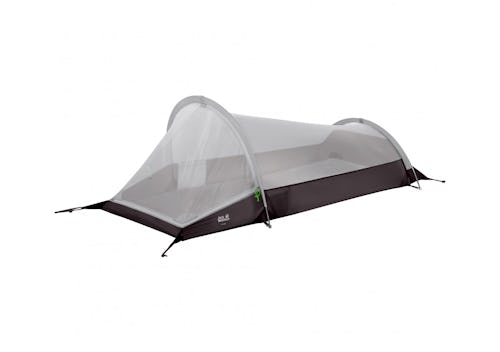
The Jack Wolfskin Gossamer 1-Person Tunnel Tent is very good value and makes an excellent introduction to solo camping. Low to the ground with just two poles, it’s very easy to put up. It comes with a repair kit, and reflectors on the guy lines and zips which are extremely helpful on dark nights. As it’s a tunnel tent, it’s not very big.
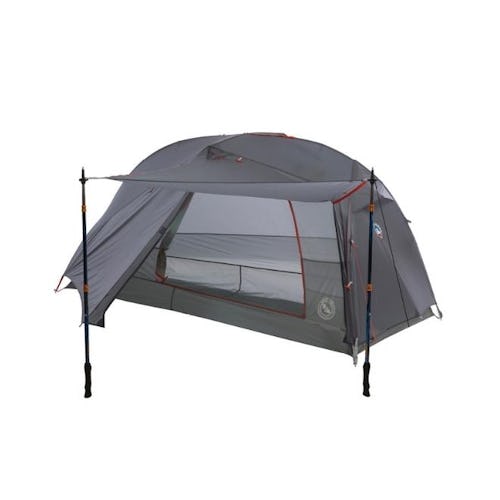
The Big Agnes Copper Spur HV UL1 Bikepack is extremely roomy, and has been designed specifically for bikepacking trips, with plenty of gimmicks. There are daisy chain webbing loops on the exterior for hanging clothing to dry and it’s easy to clip to a pannier rack. The poles fold down extremely small and can be stowed separately from the tent body very easily, which is good for evenly distributing weight on a bike.
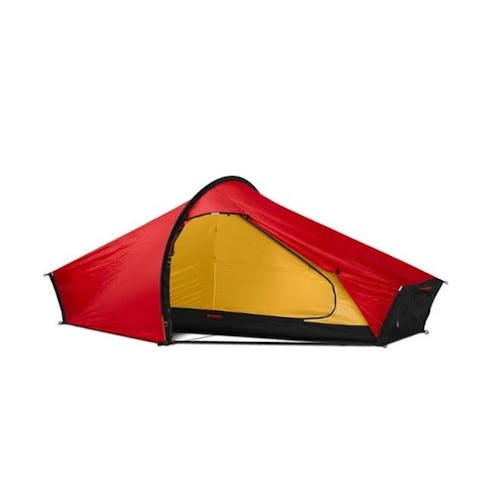
It’s impressive that at 3.7 pounds, the Hilleberg Akto 1-Person Tent is a good option for four-season use. It’s well ventilated, but the roof vents can be closed with snow-proof panels, and it’s longer than many one-person tents, making it a solid option for taller campers. This tent doesn’t come with a footprint, and for all-season camping you’re likely to need to purchase one separately.

The three-season Sea to Summit Alto TR 1 1-Person Ultralight Tent only weighs 2.4 pounds and the tension ridge pole system means that the top of the tent is roomy for even tall campers to sit upright. It’s well ventilated, too. A footprint is not included.







